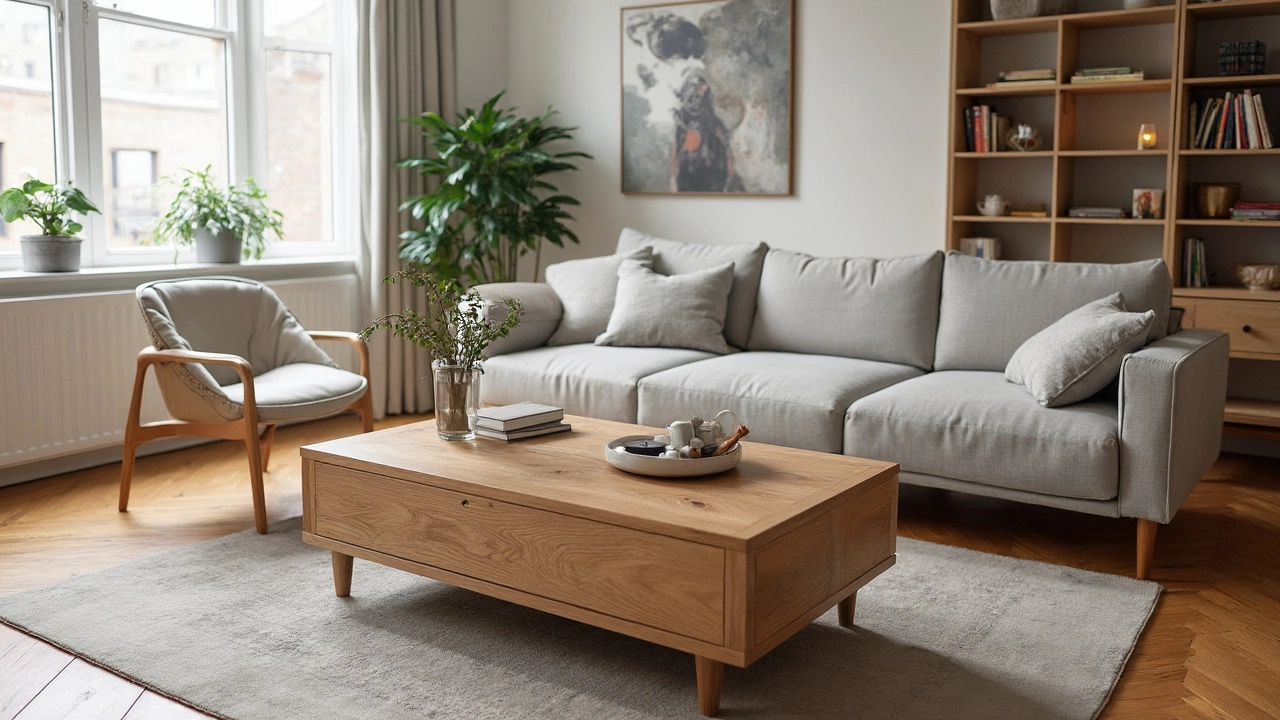Coffee Table Wood Types: What You Need to Know
Choosing a coffee table isn’t just about size or shape – the wood you pick changes the whole feel of the room. Some woods bring a warm, rustic vibe, while others stay light and modern. In this guide we’ll break down the most popular wood choices, why they matter, and how to match them to your home.
Common Wood Choices
Oak is a classic. It’s hard, resistant to scratches and shows a grain that works in both traditional and contemporary spaces. Oak can be finished light for a breezy look or stained dark for a richer feel.
Walnut offers a deep, chocolate tone that adds instant elegance. It’s a bit softer than oak but still strong enough for daily use. Walnut ages nicely, developing a richer patina over time.
Maple is bright, almost creamy, and has a subtle grain. It’s great for small rooms because it reflects light. Maple is very hard, so dents are rare, but it can show water rings if you’re not careful.
Reclaimed wood gives a story‑filled look while being eco‑friendly. Pieces often come from old barns or pallets, so each table is unique. Make sure the wood is properly cleaned and sealed to avoid pests.
Tiger‑oak and acacia are budget‑friendly options with striking grain patterns. They’re less dense than oak or walnut, so they’re lighter to move but still durable enough for everyday coffee spills.
How to Pick the Best Wood for Your Coffee Table
First, think about traffic. If you have kids or pets, go for a hard wood like oak or maple that can handle knocks. For a low‑traffic lounge, walnut or reclaimed wood can be a statement piece.
Second, match the wood tone to your existing furniture. Light woods pair well with white walls and pastel sofas, while dark woods look great alongside leather or metal accents.
Third, consider maintenance. All wood needs occasional cleaning, but some finishes need re‑oiling every year. If you don’t want to refinish often, choose a pre‑sealed surface or a wood that takes a durable lacquer.
Finally, check sustainability. Look for FSC‑certified oak or reclaimed sources if eco‑impact matters to you. Buying locally reduces transport emissions and often means you can see the wood before it arrives.Putting it all together, the right coffee table wood type balances style, strength and how much care you’re willing to give. Take a quick walk around your living room, note the colors and the wear level, then match those notes to the wood profiles above. You’ll end up with a table that feels right at first glance and stays looking good for years.
Best Wood Choices for a Top-Notch Coffee Table
Choosing the right wood for your coffee table can make all the difference in style and durability. Whether you’re looking for elegance, texture, or a budget-friendly option, each wood type brings unique attributes. From classic oak to exotic mahogany, this guide breaks down the pros and cons of each, helping you find the perfect match for your space. Learn about durability, aesthetics, and even some budget tips so you can pick the best material for your lifestyle.
More
